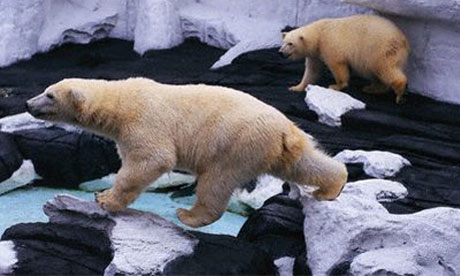
Just seconds before 10:50pm Friday night on the east coast, a Delta II rocket carried NASA's tenth item in its "discovery" series, the Kepler Mission, into the night sky. The Kepler Mission has a singular focus: to search for other Earths. In pursuit of this goal, it is going to spend at least three and a half years, and possibly up to six, searching a single patch of the heavens for other planets that exist in the habitable zone of stars in the Milky Way.
In 1960, at the Green Bank meeting in Green Bank, West Virginia, a group of astronomers, physicists, biologists, and other scientists gather and established SETI as a scientific endeavor. At this meeting, Prof. Frank Drake put forth what is now termed the "Drake equation":
The equation draws a great deal of criticism from those who claim the values for some of the terms are at best arbitrary and unknowable. Over the past 49 years, we have gotten a much better idea as to the rate of star formation in the Milky Way (R*), and in the past decade we are starting to get a handle on the number of exosolar planets that exist (fp). The Kepler Mission hopes to indirectly answer what fraction of stars have rocky, earth-sized planets that exist in the habitable zone about a star (ne)—the region of space near a star where liquid water exist as a stable phase.
So far, 342 exosolar planets have been detected by a variety of indirect—and a few direct—measurements. The vast majority of the exosolar planets found have been gas giants orbiting close to their stars. Known as hot Jupiters, these are planets that have a low probability of supporting life. The Kepler Mission will use a single piece of observational equipment—a highly advanced photometer—to look for Earth-like exosolar planets transiting their host star.

A transit is the name given to a planet passing in between us and its host star; such an event would be observed as a slight change in the output of the star. For an Earth-sized planet transiting a Sun-sized star, the change in the star's output would be less than 84 parts per million, and there would be less than a one percent chance of the transit even being viewable from Earth. Kepler's photometer is so sensitive that it will be capable of detecting a 20 parts-per-million change in stellar output in a star that is 250 times fainter than any that can be seen with the naked eye.
To rule out false positives, an object will need to make at least three transits with a consistent period and change in brightness. In order to maximize the chances of seeing such a rare event, the Kepler Mission will only look at a single area of the sky. For the next three and a half years, Kepler will look towards the constellations Cygnus and Lyra and stare at the over 100,000 stars in that region. The spacecraft's orbit will not be about the Earth itself, rather it will be placed into an Earth-trailing heliocentric orbit, which will allow for a very stable pointing attitude.
While in this orbit, different classes of planets will be discovered within different time frames. The first to be spotted will be the hot Jupiters, gas giants orbiting close to their host stars within a period of only a few days. Once about a year's worth of data is collected, Mercury-like planets—those with an orbit of a few months—will be able to be picked out. For planets like Earth, which require a full year to orbit a star, it will take the full three years of mission time to be able to conclusively identify these objects. As one mission scientist quipped, they are not looking for ET, but they may find ET's home.







